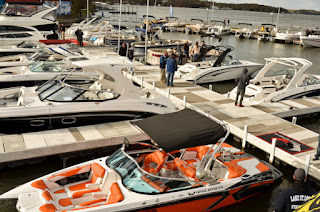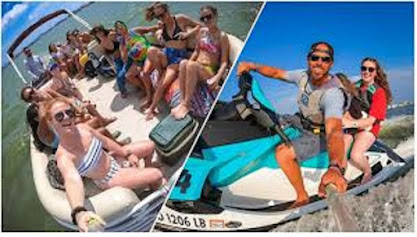Boat Maintenance for the Novice
Not being a mechanic, and knowing my limited skills I find Boat maintenance, as a whole, is actually quite similar to automobile maintenance.
There are a few very basic items that require constant maintenance which the owner normally takes care of, and a few items that require maintenance at regular intervals which some owners deal with but most people leave to the professionals. Any basic boat maintenance checklist would include the following items...
Boat Maintenance Checklist:
- Engine(s)
- The boat’s hull (bottom) and topsides
- Electrical systems
- Plumbing and HVAC systems (in larger boats)
- Moving parts (like hinges, tracks, and zippers)
- Canvass and upholstery
- Meguiar's M5401 Marine/RV Gel Wash, 1 Gallon. ...
- Star Brite 094000 Salt Off Protector Kit W/Ptef. ...
- Boat Juice Cleaner Kit - 32oz Exterior Cleaner - Ceramic SiO2 Sealant - Water Spot Remover & 32oz Interior Boat Vinyl Cleaner - Ceramic UV…
- Simple Green
- Mix one cup white vinegar in two gallons water. Pour one cup white vinegar in one quart warm water; rinse and squeegee. Wipe with ½ cup vinegar and ½ cup water solution. Pour in baking soda and scrub with a brush.
After a day out on the water, other than cleaning the boat and lubricating parts as necessary there aren’t many maintenance tasks you need to worry about. Follow manufacture recommendation.
The one other maintenance chore that should be done after every trip is making a simple visual inspection of all the boat’s systems. If you spot anything wrong, then you can decide whether to tackle the challenge yourself or take the boat in for repairs. Most boaters leave annual boat care and maintenance chores, like changing engine oil, lubricating fittings, and painting the hull bottom, to professionals.
One item that always come up at the end of the boating season is winterrsing your boat.
For the handy, self-sufficient boat owner, taking care of winterizing yourself is a great way to save money. Ironically, DIY can potentially even save you some time. Winterizing a boat can be done in less than an hour in many cases, less time than you'd spend just driving the vessel to and from the marina or shop.
If you have a inboard or a inboard / outboard engine the following are steps to winterization.
- Start by prepping your engine; ensure all water has been drained and removed.
- Apply corrosion protection to your engine.
- Consult your owner's manual for specific instructions, and complete fogging, if needed.
- Add a fuel-stabilizing additive to your fuel system; then run the engine.
- Change your engine’s fuel filters and any fuel/water separators in the system.
- Drain your boat's freshwater plumbing systems (sinks, tanks, and heads).
- Add antifreeze to your plumbing systems. ( RV antifreeze )
- Ensure water is removed from all additional systems (raw water washdowns, livewells, bilge pump, etc.).
- Remove drain plugs.
- If you store your boat in a slip year round be sure to close all drain plugs, or you will run the risk of sinking your boat.
- Cover your boat or place it into winter storage.
Outboards
Outboard engines are designed to drain all the water from their cooling systems completely, when tilted in the down position. So lesson number-one is to tilt the engine down all the way, and leave it there. Covering it is a good idea, but make sure there’s enough ventilation that condensation doesn’t form.
- Aside from eliminating H2O from the equation, you’ll want to give the engine’s internals some protection from corrosion as it sits.
- Historically, with carbureted outboards and old-tech two-strokes this meant running fogging oil through the engine. Most modern outboards, however, are “fogged” via a much easier process.
- Some manufacturers offer products that can be mixed into a remote fuel can of gasoline, and run through the engine to give it a layer of protection. And some other modern outboards control the process electronically—you simply navigate to a “winterize” mode in the control system, and press the button.
- Each manufacturer’s method is a bit different (and sometimes different models in their line require different steps) so this is the time to consult your owner’s manual.
Many people feel that the very best way to winterize an outboard is simply to use it, and they have a point. It’s not low temperatures that cause issues with outboards, but long periods of inaction. If you live in an area where you can run the engine every few weeks (long enough to allow it to reach normal operating temperature), additional winterization steps usually aren’t necessary.
One final tip: now’s the best time to change your lower unit and/or powerhead oil, visually inspect it to be sure there hasn’t been any water intrusion, and put the boat to bed with fresh fluids for the winter.
Basic Maintenance will safe costly repairs in the and make boating more enjoyable.





Comments
Post a Comment